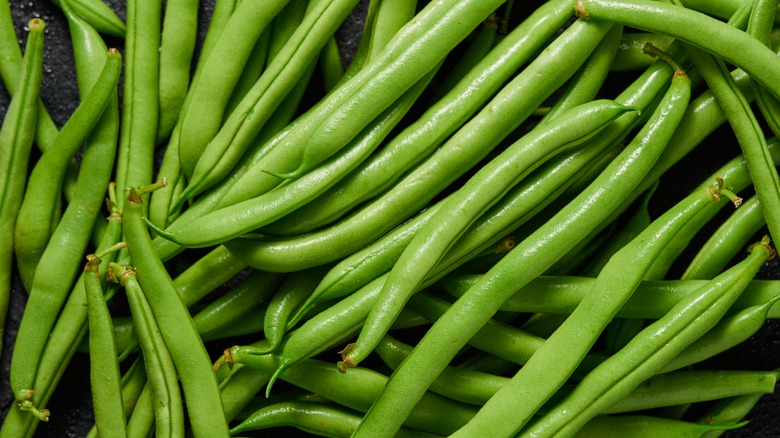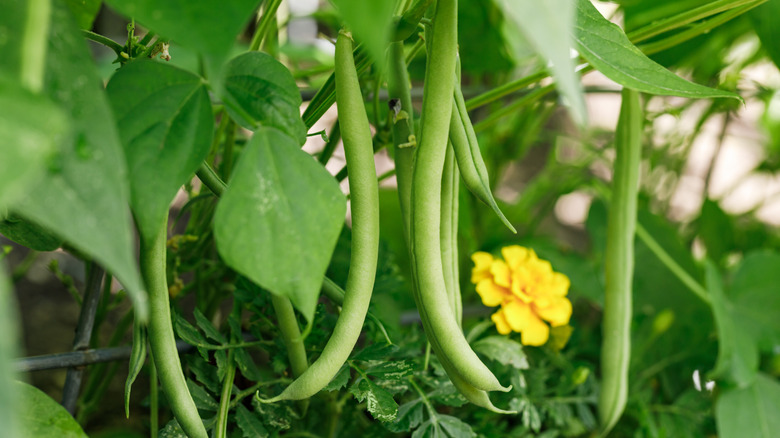Are Green Beans Legumes Or Something Entirely Different?
Along with time-tested nutrition advice like, "eat your vegetables," and "drink more water," you've probably heard you should eat more legumes. Beans and lentils might come to mind when you think of this food group, but green beans are a bit harder to pin down. Yes, they have the word "bean" right in their name, but some say they're not legumes at all. If you're confused, you're not alone. The classification of green beans depends on whether you're talking about them in the botanical sense or the nutritional sense.
Botanically, green beans are legumes, but in the nutritional and culinary senses, they're not. To break this down, botanical classification of fruits and vegetables depends on their scientific characteristics and how they grow. Green beans grow in a similar manner as other legumes, placing them in the same botanical category.
Nutritional classification has more to do with the nutrient profile of foods, so according to the Dietary Guidelines for Americans, this places green beans in the vegetable category, which is often separate from other legumes like peanuts, soybeans, or other bean varieties, like kidney or pinto. And when it comes to culinary applications, you wouldn't prepare or serve green beans in the same manner you would other legumes, so it makes more sense to categorize them as a vegetable here.
Green bean classification varies based on context
Botanical classification, which is the scientific naming and categorization of plants, can often vary from how we view foods from a nutritional or culinary context. Take the fact that bananas are actually berries or that savory olives are really fruit. When it comes to green beans in the botanical context, they are both vegetables and legumes. That's because a vegetable is any edible part of a plant, like leaves of spinach, roots of potatoes, or stalks of celery. Legumes are a subcategory of vegetables, which include plants with fruiting pods. The legume category is divided into three subcategories, including oilseed legumes like soybeans and peanuts, pulses like beans, chickpeas, and lentils, and fresh legumes like green peas and green beans.
According to the USDA, green beans are closer nutritionally to non-starchy vegetables like lettuce, cabbage, and broccoli than they are to beans, peas, and lentils (aka pulses). That is because green beans are relatively low in carbohydrates and are primarily made of fiber and water. They also go through different processing steps before they reach your plate. Pulses are dried and then rehydrated and cooked before eating, whereas green beans don't require drying and are consumed fresh (like NYC's famous green beans in a bag), frozen, or canned.

